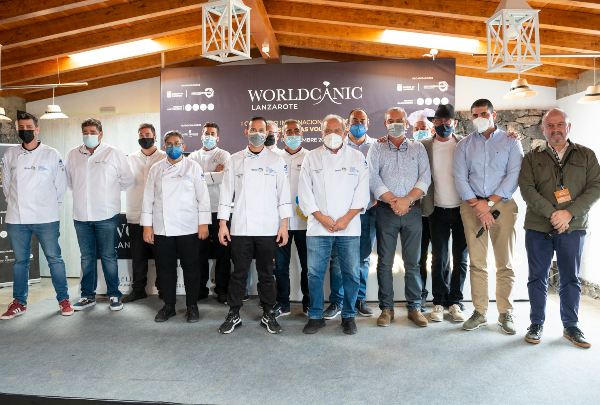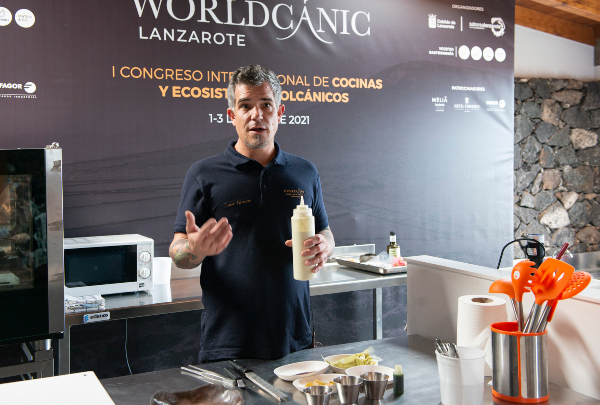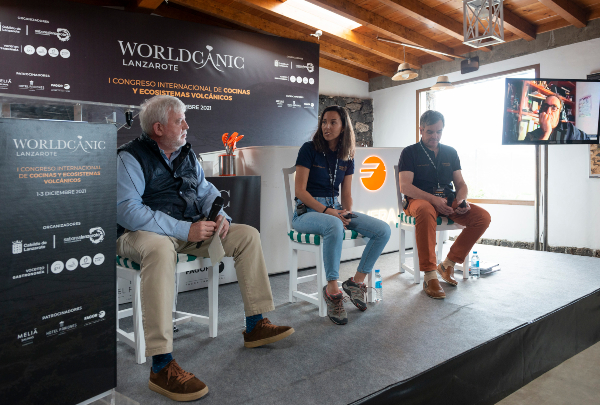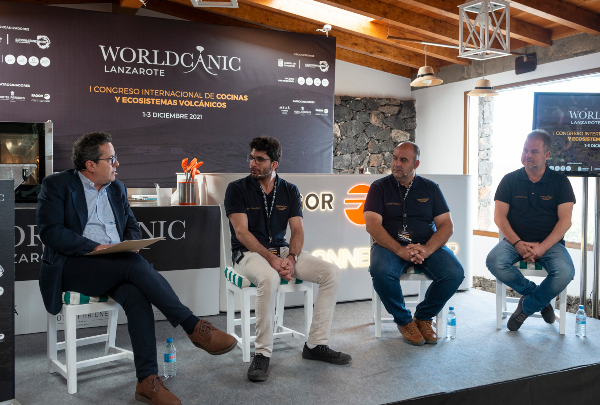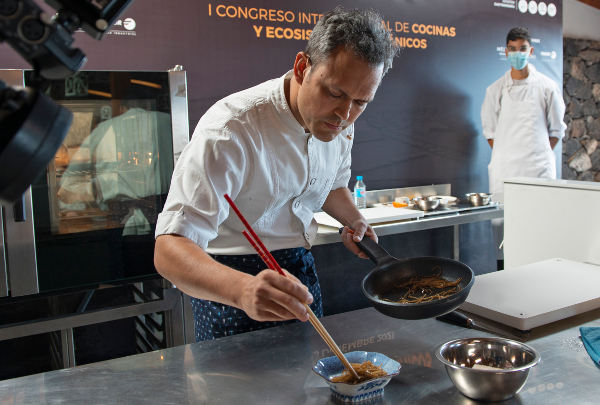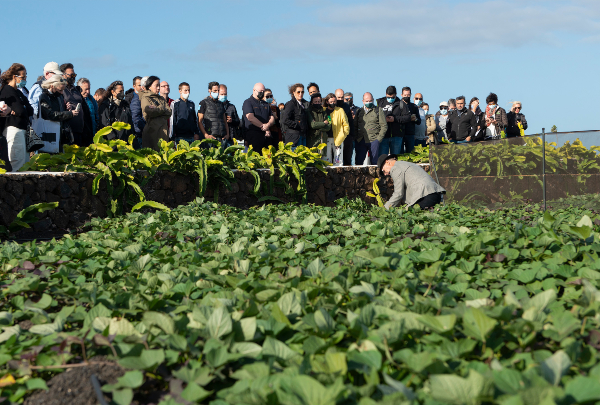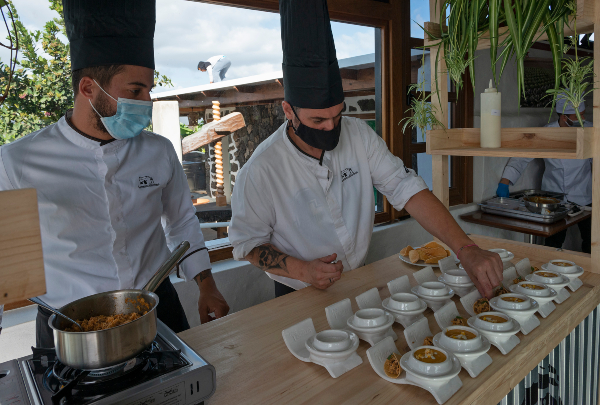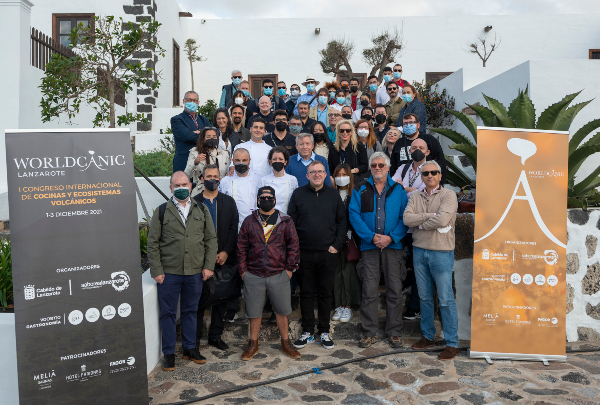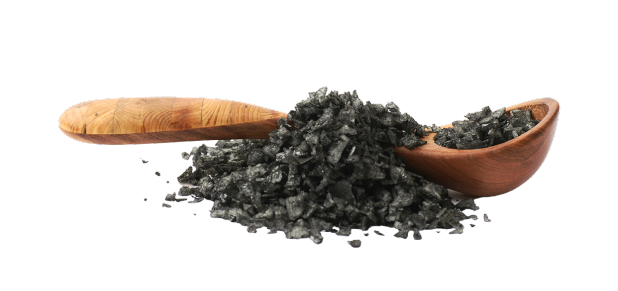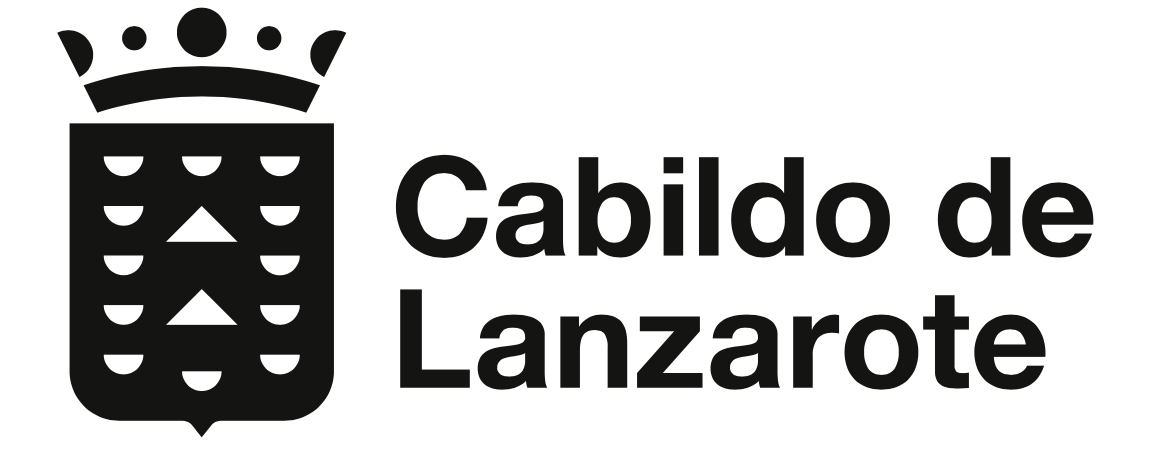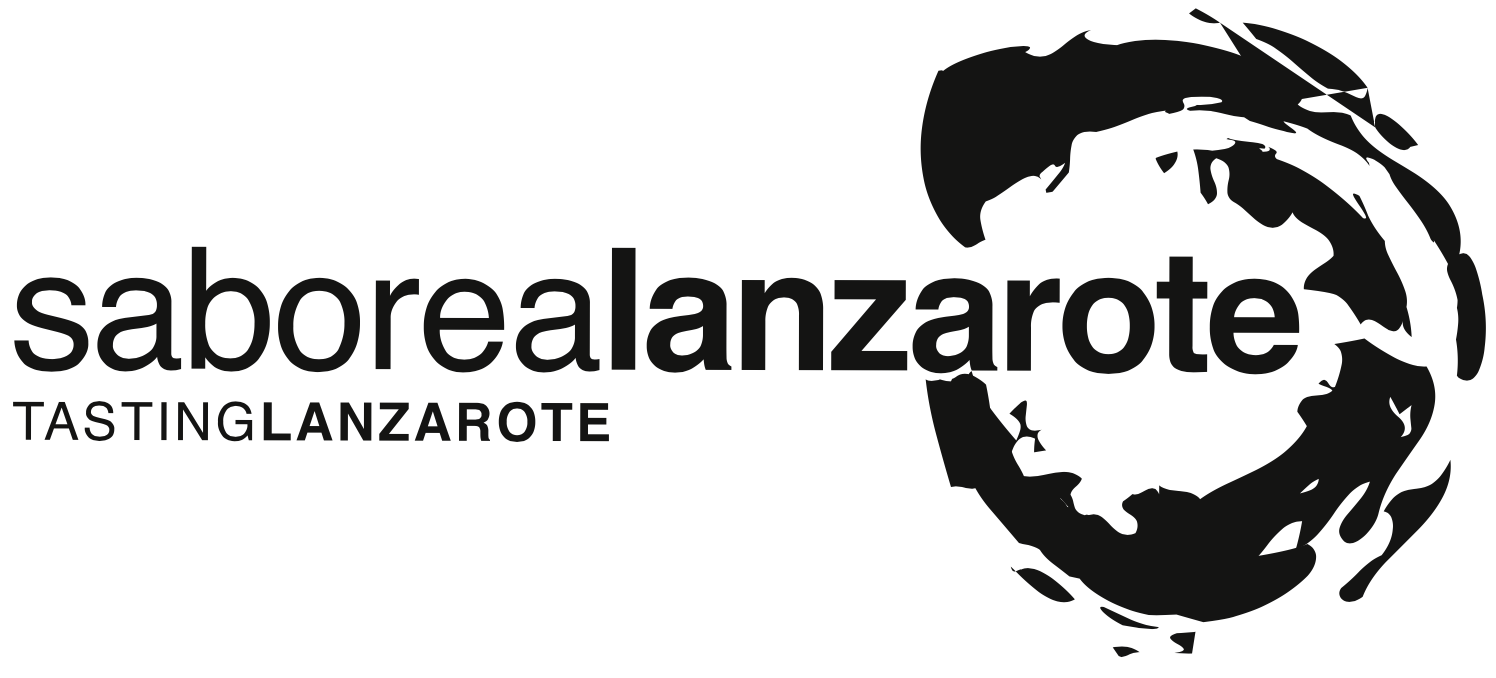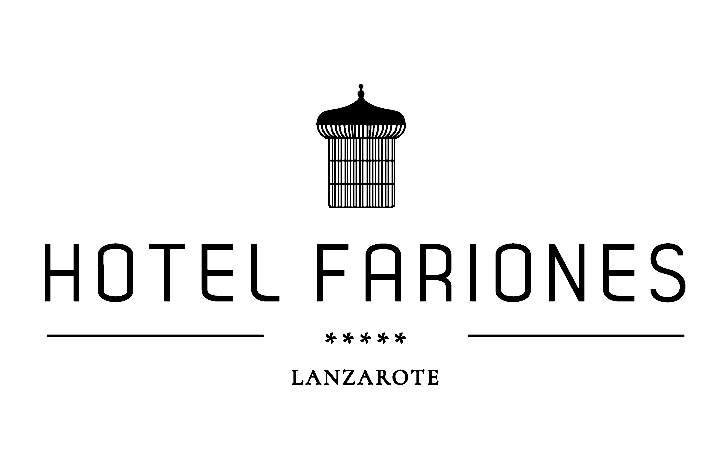News
Liko Hoe reports to Worldcanic on Hawaiians' connection to kalo
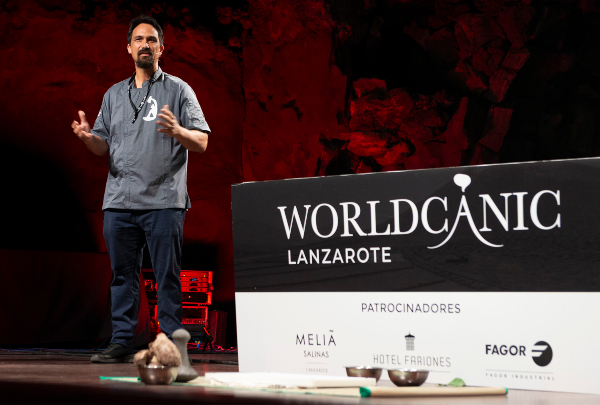
Hanai i ka’ai. Hanai i ke aloha. Sustenance with food. Sustenance with the feeling of aloha, with love.
This declaration of intent in Hawaiian kicked off the talk by Liko Hoe, chef at Waiahole Poi (Kaneohe, Hawaii), a chef who puts the culinary tradition of his island into his cooking, along with the history of his people and his ancestors.
Echoing Chele González, Hoe homed in on the value of product in volcanic regions, and particularly the resilience of one plant in particular: "kalo", also known as "taro" in Hawaii. Although the leaves of this plant are also used in the Pacific islands as described by the Cantabrian living in the Philippines, Hawaiians make even more extensive use of the plant, especially the root.
Hawaiian families use taro to make a gelatinous paste known as "poi", by crushing the plant's root in wooden bowls with basalt rocks. Grinding the tuber, breaking it down into a paste and letting it ferment afterwards - "it tastes like a yoghurt" - so that the poi will keep for two or three weeks, was and still is a basic source of food among the island's population.
The Hawaiian repeats this tradition in each poi he makes, and pays homage to his ancestors, who arrived in the islands across the seas. Just like he made the poi. “Our ancestors arrived in these islands by sea from the Asian continent, and it was essential to have food that could be preserved during these voyages. Kalo was essential for them”. This plant provided them with food for the journey, and so by the time they settled on the island "kalo had become the closest thing to human beings for Hawaiians, like a close relative".
Using his basalt rock as he ground the poi, Liko Hoe pointed out how a foodstuff transcends its whole objective: “food does not just provide us with sustenance, it connects us to each other and to a territory”. A territory which in his case is a volcanic territory, and so it comes as no surprise that the traditional method for cooking poi is in an "imu" oven with which "we recreate a volcano". The imu steam-cooks by means of a hole in the ground which is filled with wood and covered with stones. When the wood is fired, the stones heat up and transmit the heat to the food, which is wrapped in leaves and cooks slowly.
Yet another example of tradition, adaptation to the territory which generates culture "and gives us that feeling of community we have in Hawaii”.

